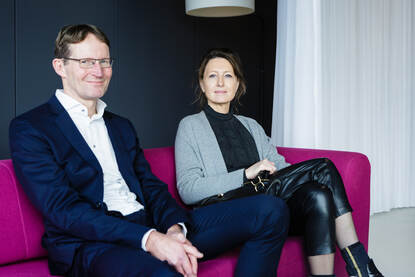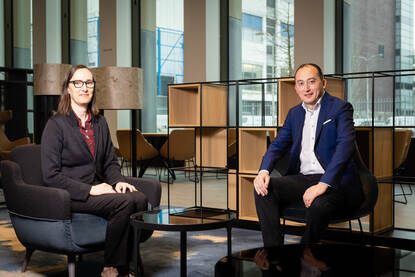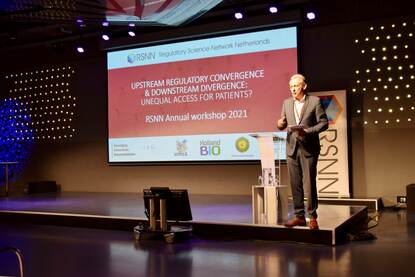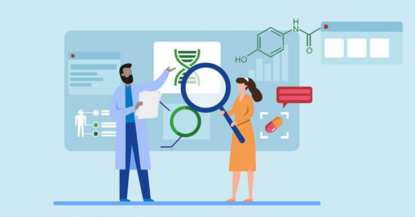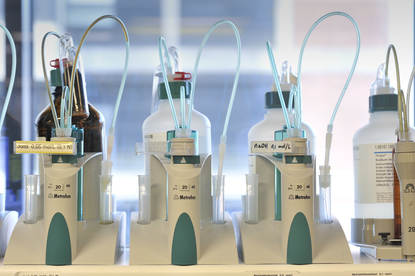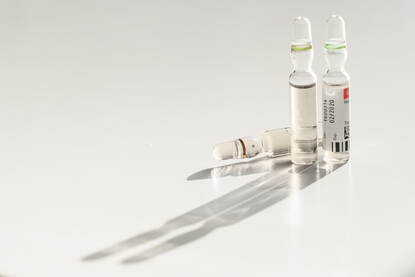The academic world plays a key role in drug discovery and development. However, bringing drugs to market is a challenging and demanding journey for academic researchers. This year’s edition of the MEB Science Day focused on breaking down the barriers and how to help move academic drug development forward.
MEB Science Day on YouTube
Interested in this year's MEB Science Day? A video of the live event is available on the MEB's YouTube-channel.
Strengthening academic drug development: how to move forward with confidence?
Just like in 2021, this year’s edition took place as an online event, due to COVID-19 restrictions. The entire programme was broadcasted live from a studio setting in Utrecht. “It’s a pity that we still couldn’t meet attendees and speakers in person”, says Dr. Marjon Pasmooij, Science programme manager at the MEB. “On the bright side however, holding an online event meant that more attendees could participate, from all over Europe and even outside of Europe. And once again we saw an increase in the number of attendees, with over 500 registered participants.”
Challenges in development
The popularity of the event clearly illustrated the relevance of the day’s theme. “The academic world plays a key role in drug discovery and development. Many innovative medicines have their roots in academia”, Marjon explained. “Nevertheless, we see challenges. Many drugs don’t make it to the market. It seems too challenging and demanding to fulfil regulatory requirements or to navigate the regulatory system.”
With a variety of speakers, the MEB Science Day presented a broad perspective on opportunities that can help academic developers to take the next steps. Some of those opportunities are offered directly by the regulators, EMA or MEB. During her presentation, Marjon explained the possibilities to acquire scientific advice. “There are all sorts of opportunities. Scientific advice on a national level, for instance via the MEB, can be a great first point of contact. In face-to-face meetings we can offer ‘tailor-made’ advice. If you want to bring your findings to the patients, it’s important to take regulatory guidance into account, even early on in the process. Think about what you publish, about patents and about reproducibility of studies. It will all help to increase the chance of success.”
Education - STARS
Lack of knowledge of regulatory requirements and of the skills to navigate the regulatory system can be a large barrier. Education on the matter can play a role in getting past that barrier. Therefore, the MEB participates in the EU funded Coordination and Support Action on Strengthening Training of Academia in Regulatory Science (CSA STARS).
Dr. Viktoriia Starokozhko is a clinical assessor at the MEB and project member at STARS since the project started in 2019. “Unfortunately, no academic drugs have yet reached marketing authorisation so far. We see a gap between the developmental and clinical practices phases. The so called ‘valley of death’”, Viktoriia explained. “That gap has several reasons, leading from the science itself to financial hurdles. But the regulatory aspect also contributes to this gap. That is where STARS steps in.”
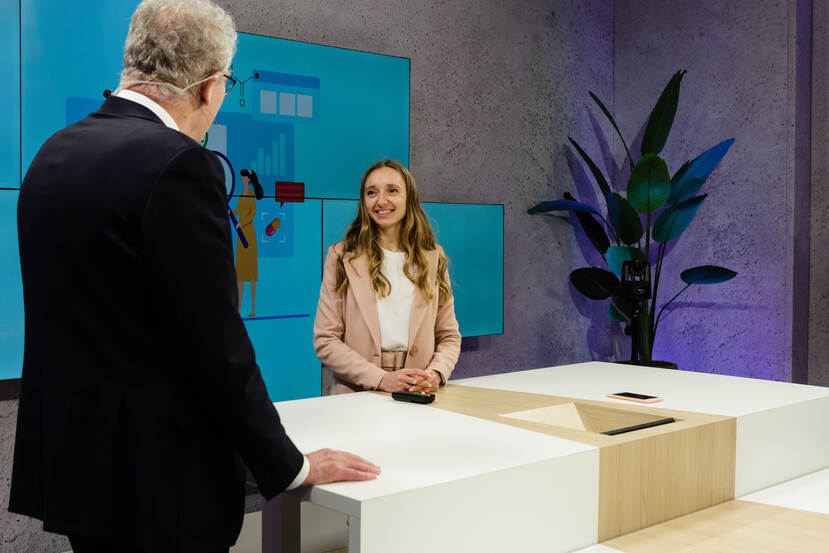
Bridging the knowledge gap
“STARS intends to bridge the regulatory knowledge gap. There are a lot of opportunities, like Marjon just explained and also a lot of regulatory support tools, but a lot of researchers simply aren’t aware of their existence. During surveys we found that a lack of good communication and the complexity of processes also contribute, besides a lack of regulatory knowledge.”
In several ways STARS intends to address those issues. Viktoriia: “We maintain a comprehensive inventory, providing an overview of support services for regulatory activities. There are also workshops, whitepapers and several pilot activities to help improve knowledge and communication.”
To provide that knowledge, STARS also proposed a curriculum for both pharmacy students and post graduates in healthcare, on several regulatory aspects. “Our primary goal is to turn the valley of death into a valley of success”, Viktoriia concluded in her presentation.
Views from the academic field
Prof. Teun van Gelder (Leiden University Medical Center) and Prof. Carla Hollak (Amsterdam University Medical Center) shared their views from the academic perspective. They both notice difficulties as well as opportunities for academic drug development. “It’s especially in the field of rare diseases and orphan drugs where academic pharma can make a difference”, says Carla. “More and more drugs for narrow indications are evolving, and it’s a fact that these orphan indications start in academic environments quite often. So paving a successful road to patient access for these drugs is very important.”
“The attrition rate in academic drug research is quite high”, says Teun. “But if we work together on a national level, we can get past that valley of death.” There are chances, Teun thinks like Carla. “Take ATMP’s for instance, 40% of initiated clinical studies in that area are initiated by academia. That’s a promising start.”
This edition of Regulatory Science Magazine also features an interview with Teun van Gelder and Carla Hollak.
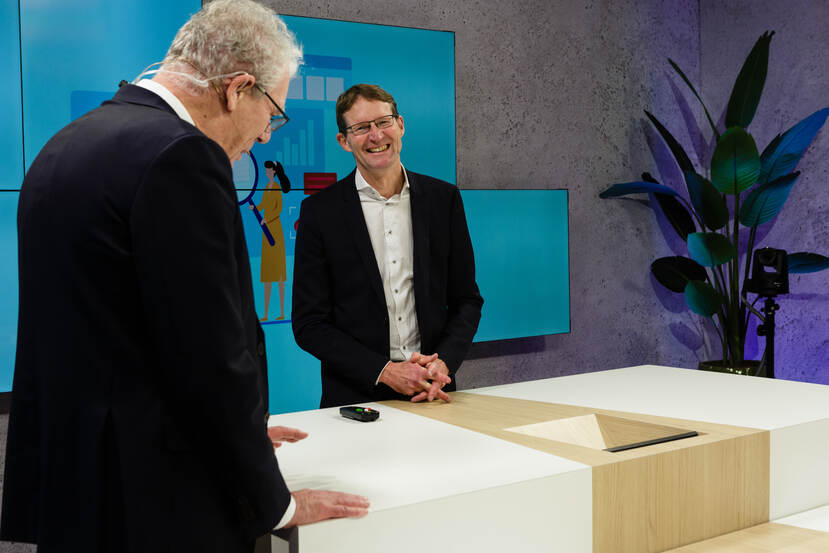
A more integrated approach
Clémence Ross-van Dorp is ambassador Life Sciences & Health Sector for the Dutch ministry of Economic Affairs. In a short video pitch during the Science Day, she explained the need for a more integrated approach to the life science and health sector in the Netherlands, by connecting national activities to European and international patients’ needs.
*Ambient music plays*
Logo CBG MEB appears on screen.
On-screen text: MEB Science Day.
Clémence Ross-van Dorp.
Clémence Ross-van Dorp:
Hi. I'm Clémence Ross and I'm the ambassador
for the action program:
New chances for the
Life Sciences and Health Top Sector.
This is an action program that is a result...
of the working together from all the stakeholders
in the field of Life Sciences and Health...
to be able to make Life Sciences
and Health stronger in the Netherlands...
to make ourselves seen better in the world...
and of course to be in the Champions League
of Life Sciences and Health...
because that's what we want.
A couple of years ago,
we became very much aware of the fact...
that we have beautiful clusters
in Amsterdam, Leiden...
in twelve and more places in the Netherlands.
The Netherlands is very small, you know.
In the world, it's like a post stamp.
It's like one city of 17 million people.
But we have a lot of clusters
that really have good profiles.
But we did not seem to have a Dutch profile
of Life Sciences and Health.
So we became very much aware
of the fact that we needed that...
to show in the world
what the Netherlands is really about.
And how we work. Not only what we do,
but we do it in a specific way.
We have tried to pronounce our national
proposition with the whole field of stakeholders...
in an ecosystem dialogue. From academia
to farmer, everybody was engaged. Hospitals.
And the ministries, of course.
Economic Affairs and Climate...
and the Ministry of Health, Welfare and Sports.
So we all worked together
and we also defined actions...
that could make our Life Sciences
and Health system stronger.
So now we are at the tipping point
of some of these actions...
to carry them out and to say: We're
going to do that and we need each other.
It was a very nice process.
And of course,
for academia these actions are very important.
Because it means that we are going to try to find
out how we can bring research to the patient...
or to the market.
Of course, that's why we're doing it.
We all are doing this work for the patient.
On-screen text: What are you going to do within this action programme?
Clémence Ross-van Dorp:
Well, for example, it's very important
to see how we can best connect...
with the European Medicines Agency.
And we, of course, in the Netherlands
have our own system...
which works very well.
We can trust our medicines and therapies.
But we are part of Europe.
So it's so important that we have
a very good connection with EMA.
So as an ambassador myself,
I had some encounters with Emer Cooke.
And there's a couple of people whom
I work with very closely, from academia...
and from institutions like the CBG...
to see how we can make
this connection work better.
For example in the field of rare diseases,
ATMPs, real world data.
And how we can connect our incubator status in
the Netherlands of beautiful things that we do...
to the needs of Europe and the demands of
all the patients in Europe and outside Europe.
So that's very, very interesting.
I'm sure everybody will hear from that
within the next coming years.
On-screen text: What is your advice for academic developers?
Clémence Ross-van Dorp:
Fundamental research is the basis of everything.
Without fundamental research,
without curiosity...
without trying to find out something or just trying
and not even knowing what's coming of it...
that's what it really is about.
The most important inventions I can think of
sometimes just suddenly popped up.
It was not a financer that said:
We want you to invent this or that...
and work at that and then it comes.
No, it does not work that way.
When you want to be
in the Champions League...
you really have to provide enough money
for fundamental research.
But then, when you start to do that,
it might be that you find out something...
and you think: Wow, this is great, this is really
something for the patient, or whatever.
We are going to do this.
But it happens quite often
that the researcher thinks:
Wow. Now what?
Because I have to develop this.
I need money. Where to go to?
I think it's so important
that we also integrate in academia...
knowledge of how you can bring
your research into the next steps.
And how you work together
with this field of stakeholders.
Everybody wants this,
so I think this is going to happen.
So I would advise: Be engaged.
Say that you need it, that you want it.
We can also do this online.
Covid has taught us that it is not necessary...
to always go places all the time.
So I think this is important.
And also that we try to think
of the type of business...
that new inventions, therapies, medicine needs.
Because it's not always Big Pharma
that is going to produce...
what you find out for this patient.
What you discover.
So we must think about this.
And I think this is the work of the whole
ecosystem, Big Pharma included.
And that we must keep the beautiful things,
also in the Netherlands...
so that we can have start-ups,
scale-ups in business...
where you also, as academia,
stay involved with...
and not just discover something
just for the sale.
*Ambient music plays and fades out*
Logo CBG MEB, Medicines Evaluation Board appears on screen.
Panel discussion – critical success factors
In the afternoon MEB chair Ton de Boer led a lively panel discussion, which was combined with short pitches. One of the pitches was given by former MEB chairman Bert Leufkens. “Regulatory systems are never perfect. They evolve over time. Regulatory science is there to improve the regulatory standards and procedures, but also to understand how things work and can be improved”, Bert said. “Therefore we need to be closer to academic research, to help them towards their next step.”
Also at the discussion table were Emeritus Prof. Jaap Verweij and Dr. Saco de Visser, the intended director of FAST (Future Affordable Sustainable Therapies). Verweij has chaired the Committee on Development of New Medicines, whose members drafted the recently published report ‘Efficiency gains through innovation in medicines development: How can science contribute, and how can stakeholders be aligned?’. In this report (published by the Dutch Royal Academy of Sciences) the Committee pleads for a less fragmented landscape in the Netherlands in the area of medicines development. A national expertise centre could contribute to that in a positive way.
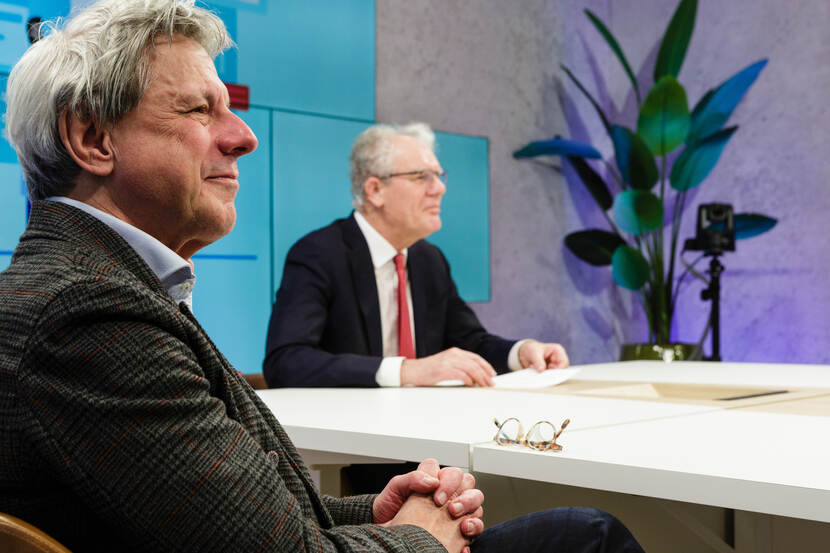
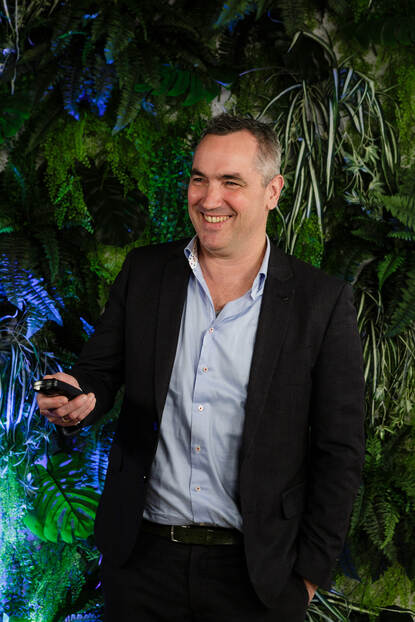
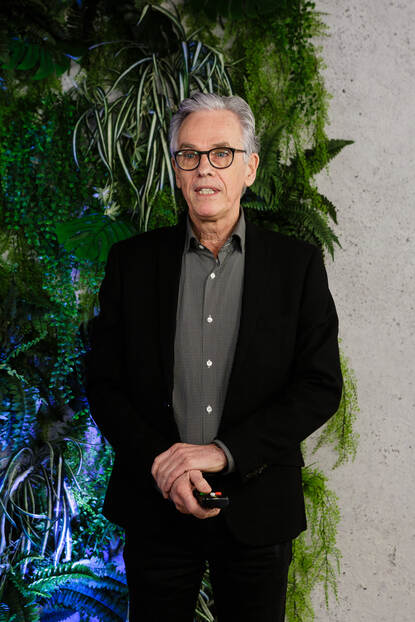
Delivering drugs to patients
FAST might be an answer to that. Intended Director Saco de Visser explained that FAST tries to establish an umbrella organization around several initiatives, including coordination of public funding and bringing knowledge and expertise together. “Tomorrow’s therapies might not necessarily fit in today’s paradigms”, he stated. “Coordinated public funding can help overcome challenges. FAST intends to stimulate innovative entrepreneurship. Regardless of who is doing it, as long as it’s about delivering drugs to patients.”
Prof. Peter Mol is a professor of Drug Regulatory Science at the University Medical Center Groningen and also works as a senior clinical assessor at the MEB. He is also vice chair of the EMA’s Scientific Advice Working Party. In his wrap up of this year’s Science Day, Peter commented on responses by attendees, which were compiled into word clouds.
“Short timelines, knowledge gaps and the lacking of a common language between academia and regulators: these are just a few of the difficulties academic researchers face when attempting to bring innovative drugs to the patients”, Peter summarized. “This day has provided an overview of opportunities that can help academia forward. Scientific advice from EMA, MEB or other competent authorities can be very helpful, I would encourage developers to make use of these opportunities.”
And the opposite is also true, Peter continues. “It’s important for regulators to know what is going on in the academic world and to keep the dialogue open with developers and researchers. Communication is so very important. We, as regulators, need to clarify our jargon, and say what we really mean. We need more awareness on this language gap. Training, active dialogue and opening up to academic researchers are the key elements!”
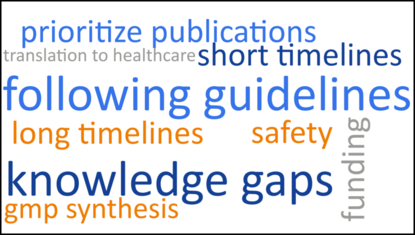
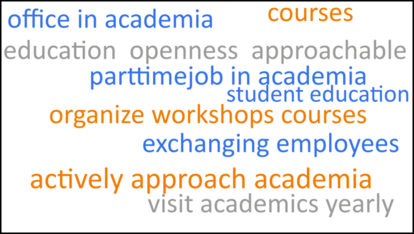
PhD Presentations
An MEB Science Day isn’t complete without PhD students presenting their recent work. As in other years, several of our students held ‘poster pitches’ during the day. Peter: “A diverse group of researchers. Their future looks bright, presenting interesting studies, giving us insights in how and where we can improve regulatory processes and our understanding of drug effects.”
Britt Duijndam is one of the PhD students that held her pitch during the Science Day. Her presentation can be seen here. The presentations of our speakers are also available in this magazine.


